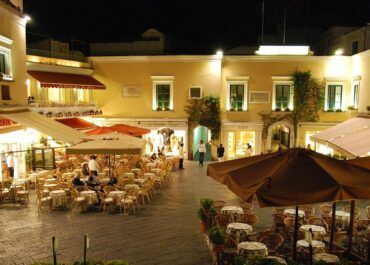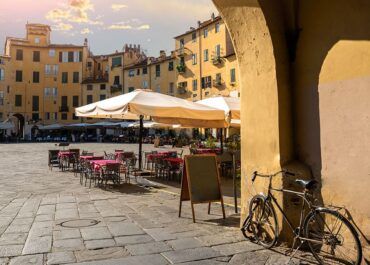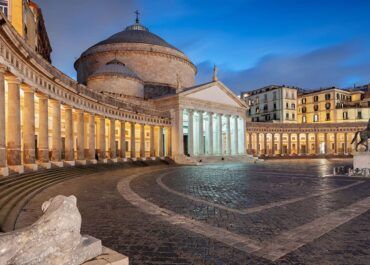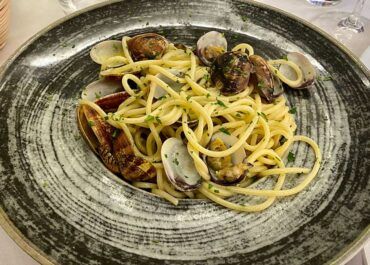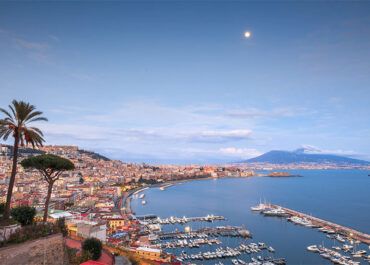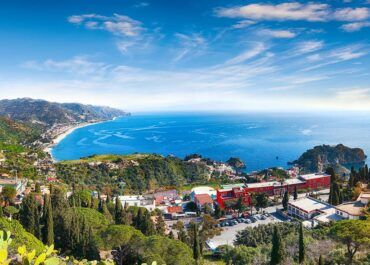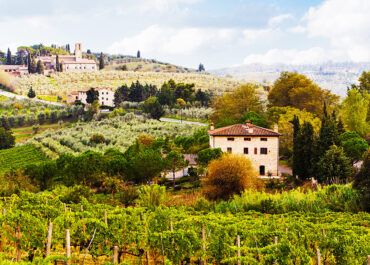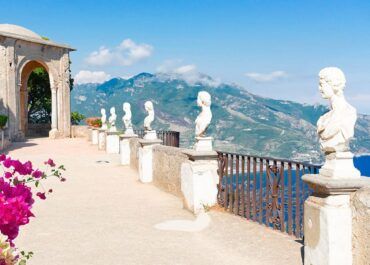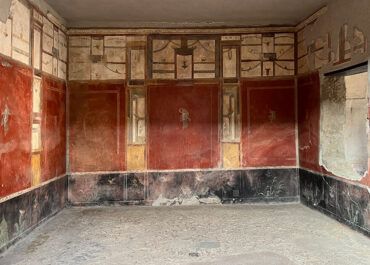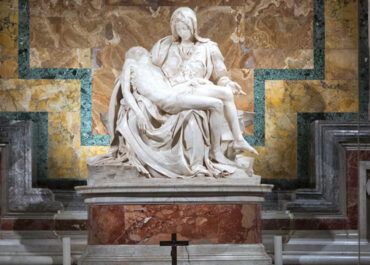Naples is a vibrant city in Italy situated on the Gulf of Naples and the Campania region. It is known for its beautiful coastline, delicious food, and ancient history. From exploring the cobbled streets of the historic city center to discovering some of the unique architectural wonders that have made Naples famous, there are plenty of things to do in this great city.
Start your trip by visiting the Castel dell’Ovo, a 12th-century castle on the seafront with a fascinating history. Or take a stroll around Spaccanapoli, an area of Naples filled with winding streets and alleyways with lots of interesting shops and eateries to explore. Then head over to Piazza del Plebiscito – a grand square surrounded by two stunning neoclassical palaces – where you can find live music and street performances.
If you’re looking to experience some of Naples’ cultural attractions, visit the Museo Archeologico Nazionale di Napoli, which houses an impressive collection of artifacts from antiquity and Roman times. There’s also the Galleria Umberto I, an art gallery featuring works from Italy’s most celebrated artists, such as Caravaggio and Botticelli. And if you’re into theatre, don’t miss out on Teatro di San Carlo -the oldest opera house in Europe!
For something different, why not take a guided tour of some of Naples’ historical catacombs? This will give you a unique insight into the city’s past while also allowing you to explore underground tunnels filled with ancient artifacts. Finally, if you’d like to spend some time outdoors, why not take a walk along Lungomare Caracciolo – one of the most scenic spots in town – or take a boat tour around the Bay of Naples to admire its stunning views?
What’s more, why not try scuba diving or snorkeling if you’re feeling adventurous? You’ll discover magnificent underwater sights, such as colorful coral reefs and mesmerizing sea life! But, no matter what activity you choose during your stay in Naples, one thing is sure: it will be an unforgettable experience!
Intrigued by Naples’ rich heritage and iconic landmarks? Dive deeper into the stories and history behind the city’s renowned monuments by visiting our detailed article. Discover the architectural marvels and historical significance of Naples’ most famous sites. For an in-depth exploration, click here to read more about the famous monuments in Naples. Your journey through Naples’ past awaits!
How long should I stay in Naples?
If you’re planning a trip to Naples, you may be wondering how long you should stay. Of course, the answer depends on what you want to do while there. If you’re looking for a relaxing getaway, plan to stay for at least four days. This will give you plenty of time to take in the sights of the city and explore attractions like Pompeii and the Amalfi Coast. Naples also has excellent beaches where you can relax and soak up the sun.
If you prefer a more active vacation, plan for a minimum of seven days. This should give you enough time to take advantage of Naples’s activities, from visiting museums and historical sites to hiking in the nearby mountains and taking boat tours around the bay. You can also explore nearby islands like Capri and Ischia or visit smaller towns like Sorrento, Positano, and Amalfi.
No matter what type of holiday experience you are looking for, Naples is sure to have something that will appeal to everyone. With so much to see and do, it’s easy to spend an entire week or more in this beautiful city. So if you’re considering taking a trip to Naples, plan accordingly!
What is the best time to visit Naples, Italy?
Visiting Naples, Italy, is an experience of a lifetime! With its stunning landscapes, rich cultural heritage, and delectable cuisine, you will want to take advantage of the opportunity to explore this beautiful region. But when is the best time to visit?
The answer depends on what kind of experience you are looking for. For warm weather, the best time to visit Naples is from late April through October. During these months, temperatures are mild and comfortable, allowing you to enjoy all the city offers. However, the peak season for tourists is in July and August, so expect prices to be higher and crowds to be more prominent during this time.
If you’re looking for fewer crowds and lower prices, consider visiting Naples in the off-season between November and March. Although temperatures can be chilly during this time of year, it’s still possible to enjoy many of the city’s attractions. Plus, you’ll find that some of the most iconic sites—such as the Castel dell’Ovo—are even more beautiful in the wintertime.
No matter when you visit Naples, there are plenty of things to see and do. From taking a tour of some of the city’s most impressive monuments—such as the Galleria Umberto I—to sampling Neapolitan specialties like pizza or sfogliatelle pastries, there’s something for everyone in Naples!
How can I have fun in Naples?
Are you looking for a fun time in Naples? This vibrant city in southern Italy has something to offer everyone. Whether you’re a thrill seeker, foodie, culture vulture, or just looking to relax, Naples has plenty of activities to choose from.
For those who love the outdoors, the city is surrounded by stunning views of the Mediterranean Sea and is an excellent place for beach activities such as swimming, surfing, and sunbathing. There are also plenty of hiking trails and biking routes that can take you through the beautiful countryside surrounding Naples.
If you’re a history buff, Naples offers some fantastic sights. The city is full of art galleries, churches, castles, and other historic buildings to explore. The nearby archeological sites of Pompeii and Herculaneum are worth visiting, too – they have been wonderfully preserved since their destruction in 79AD.
Foodies will be in heaven in Naples – the area is famous for its delicious Neapolitan cuisine. Be sure to sample classic dishes like pizza Margherita and spaghetti alla puttanesca and more unusual delicacies such as tripe and fried zucchini flowers. Remember to wash it all down with a glass or two of limoncello!
Shopping is also an enjoyable activity in Naples. You can find everything from designer boutiques to colorful local markets selling typical Neapolitan souvenirs like hand-painted ceramics and coral jewelry.
Finally, if all you want is to relax and take it easy on your holiday, head to one of the many tranquil beaches around Naples. Enjoy breathtaking sunsets while sipping an Aperol spritz, or watch the waves roll in from your beach chair – there’s no better way to unwind!
What to see in Naples: the most excellent part of Naples?
The most excellent part of Naples is undoubtedly the ancient city center. This area is filled with stunning architecture, cobblestone streets, and historic sites, making it an absolute must-see for anyone visiting the city. The old town is full of narrow alleys and winding roads, with restaurants and cafes offering delicious local cuisine. Strolling through these streets gives you a real sense of what life was like centuries ago.
Another great spot in Naples is the waterfront promenade known as Lungomare. From here, you can get incredible views of the Bay of Naples and Mount Vesuvius while taking a stroll along the boardwalk. Then, take a break from strolling to grab some seafood at one of the restaurants or enjoy a drink at one of the many bars.
The Piazza del Plebiscito is also a fantastic place to visit in Naples. This beautiful piazza is home to some of Italy’s most important historical monuments, including the Royal Palace and San Carlo Theater. It’s also surrounded by lovely cafes where you can sit back and enjoy a coffee or glass of wine as you take in all the sights.
Finally, one of the most pleasant parts of Naples is its many parks and gardens. The Villa Comunale park offers stunning views of Mount Vesuvius from its terrace while boasting lush gardens with exotic plants and vibrant flowers. The nearby Certosa di San Martino monastery is another excellent spot to explore if you’re looking for peace away from the city life’s hustle and bustle.
No matter your preference, there’s no denying plenty of beautiful places to explore in Naples. From its rich history to its charming atmosphere, there’s something for everyone in this beautiful Italian city – making it an ideal destination for anyone looking for a memorable vacation!
What is there to do in Naples, Italy, this weekend?
This weekend in Naples, Italy, there’s a plethora of activities to choose from! If you want to explore the city, you can tour the historic center, which includes world-famous sites like the Piazza del Plebiscito and Castel dell’Ovo. You can also stroll along the waterfront and take stunning views of Mt. Vesuvius and the Mediterranean Sea.
For outdoor fun, head to Parco Virgiliano or Villa Comunale for breathtaking views of the Bay of Naples. Or, if you’re feeling adventurous, you can hike up Mt. Vesuvius and explore the ruins of Pompeii! Finally, remember to check out the nearby islands of Ischia and Capri for some incredible beaches and picturesque scenery.
If shopping is more your thing, don’t miss out on Via Toledo – one of Naples’ most popular shopping streets full of designer boutiques, high-end stores, and quaint side streets filled with local artisans selling handmade goods. There are also plenty of places to grab a bite to eat or enjoy a few drinks throughout the evening.
And lastly, if you’re looking for something unique this weekend in Naples, why not visit one of its many underground churches? These ancient structures are filled with stunning artwork and religious artifacts that will make your experience unforgettable.
So whatever it is you’re looking for this weekend in Naples – exploring history, enjoying nature, shopping till you drop, or trying something new – there’s an activity for everyone!

